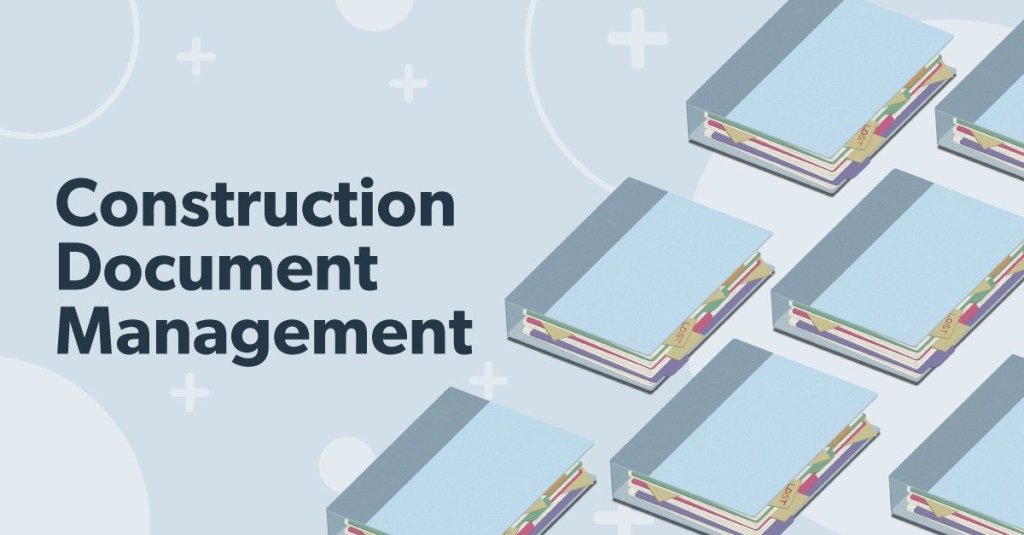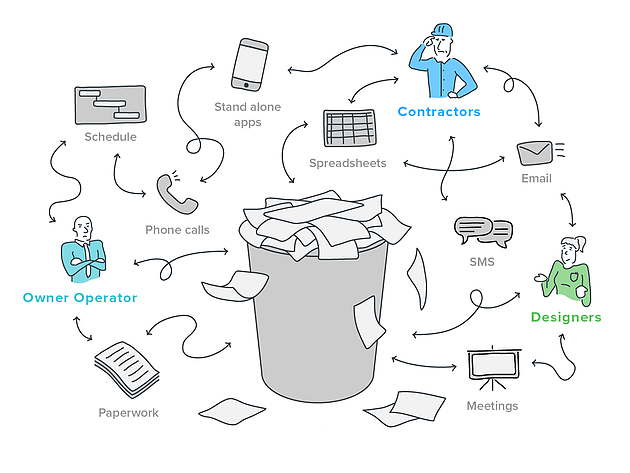Browsing Intricacy: How Construction Document Management Software Application Can Help
Browsing Intricacy: How Construction Document Management Software Application Can Help
Blog Article
Optimizing Job Collaboration: Designer's Finest Practices in Construction File Administration
In the elaborate realm of architectural jobs, the efficient management of building files stands as a cornerstone for success. Engineers, with their precise focus to detail and ingenious design solutions, are entrusted with managing a harmony of stakeholders, timelines, and sources. Nevertheless, among this intricacy exists a vital question: just how can architects enhance cooperation procedures to boost task end results? By discovering crucial methods such as leveraging cloud-based systems, developing robust interaction methods, and making certain information safety and security, designers can elevate their document monitoring techniques to new elevations.
Leveraging Cloud-Based Platforms
Leveraging cloud-based systems is an essential method for modern-day architects in optimizing building and construction record administration processes. By transitioning from standard paper-based systems to shadow services, architects can streamline partnership, enhance paper availability, and boost total project effectiveness. Cloud-based systems provide designers the ability to store, share, and update building documents in real-time, ensuring that all employee have access to the most current details no matter their location. This accessibility advertises smooth interaction and sychronisation among project stakeholders, resulting in fewer errors and delays in the building and construction process.
In addition, cloud-based platforms provide a safe and secure environment for keeping sensitive task info, offering security, regular back-ups, and user permission settings to shield information honesty. Engineers can also gain from the scalability of cloud services, permitting them to change storage ability and capability based on project demands. In general, leveraging cloud-based platforms equips architects to maximize their building and construction document management processes, driving greater collaboration, effectiveness, and success in their projects.
Carrying Out Version Control Equipment
Having actually established the advantages of cloud-based systems in building and construction record monitoring, architects can now enhance their document control processes by implementing Version Control Solution. Version Control Equipment (VCS) are crucial devices that track adjustments in papers, guaranteeing that employee are always working with the most recent and most precise information. By applying VCS, designers can keep a centralized repository where all job documents are saved, enabling seamless partnership while reducing the danger of errors and variation conflicts.
This function is particularly beneficial in building and construction jobs where style iterations and adjustments are common. This openness not only improves responsibility but additionally helps in solving disputes or discrepancies that might occur during the job lifecycle.
Developing Communication Methods
To make certain effective and reliable task sychronisation, designers must develop clear and robust communication methods within their construction paper administration processes. This platform might be a project monitoring software application, e-mail threads, or cloud-based storage space services.
In addition, communication methods should likewise consist of guidelines on just how to manage conflicts, change orders, and urgent problems that may occur throughout the task lifecycle. Developing an organized method to communication makes certain that all stakeholders get on the exact same page, promotes transparency, and eventually adds to the effective completion of the building and construction task.
Making Use Of BIM Software Program for Coordination
BIM software program plays a pivotal role in enhancing sychronisation amongst task staff member in the construction market. Building Information Modeling (BIM) facilitates partnership find this by giving a central system where designers, engineers, specialists, and various other stakeholders can interact in a worked with way. With BIM software program, job participants can access and update a common design which contains in-depth details regarding the structure layout, building parts, and job routines.

Furthermore, BIM software application enables real-time collaboration and interaction among employee, no matter of their physical area. With cloud-based BIM systems, project stakeholders can access the most up to date task details, track modifications, and make informed decisions quickly. Generally, leveraging BIM software application for coordination boosts job effectiveness, productivity, and ultimately brings about effective project end results.
Ensuring Data Security and Compliance
In the world of construction file administration, securing information stability and ensuring regulative compliance are extremely important factors to consider for architects and other task stakeholders. Designers must carry out durable safety measures to shield delicate task info from unauthorized gain access to or violations.

Final Thought
To conclude, designers can maximize project cooperation in building and construction paper administration by leveraging cloud-based platforms, implementing version control systems, developing interaction procedures, using BIM software program for sychronisation, and guaranteeing data safety and compliance. These finest methods aid streamline the important link building and construction procedure, enhance communication amongst task stakeholders, and boost efficiency in job shipment. By adhering to these standards, designers can efficiently handle building papers and assist in effective task results.
With BIM software, job individuals can access and upgrade a common version that consists of comprehensive info regarding the structure style, building parts, and job routines.
Through cloud-based BIM platforms, project stakeholders can access the latest job details, you could check here track changes, and make educated choices without delay - construction document management. Overall, leveraging BIM software application for coordination enhances task performance, efficiency, and eventually leads to effective job results
In verdict, architects can maximize task collaboration in construction file monitoring by leveraging cloud-based systems, executing version control systems, establishing communication methods, using BIM software for sychronisation, and making sure data safety and security and conformity. These ideal techniques aid improve the building process, boost interaction among job stakeholders, and boost effectiveness in project shipment.
Report this page